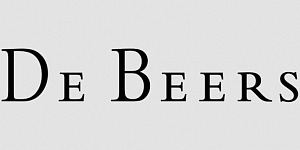Fitch Ratings has affirmed Angola's Long-Term Foreign-Currency Issuer Default Rating (IDR) at 'CCC'.
A full list of rating actions is at the end of this rating action commentary.
Key Rating Drivers
Angola's rating reflects the risks to the government's medium-term debt sustainability and uncertainty around available external financing sources in 2022 and 2023, as the current IMF programme ends and external debt service needs increase significantly in 2023. However, the recent recovery in global oil prices will support an improvement in the fiscal position, which along with the prospects for higher GDP growth and less FX rate depreciation, will contribute to placing government debt on a downward path.
Higher oil prices will drive an increase in government revenue, which will contribute to a fiscal surplus of 1.2% of GDP in 2021. The government has managed a significant fiscal consolidation effort over the past several years in the face of falling oil production and low oil prices. The non-oil primary deficit averaged 8.1% of non-oil GDP in 2018 to 2020 compared with an average of 37.8% in the 10 years prior. Due to an increase in VAT and income tax collections, non-oil revenue rose to 9% of GDP in 2020, after falling to a recent low of 5.9% in 2017.
Despite the adjustment, Angola remains highly reliant on oil revenue, which will fall as oil prices reverse their 2021 rise and production remains flat. In 2022 and 2023, we expect that the combination of the 2022 general election, lower oil prices and increasing pressure on the government to spend to support the economic recovery, will lead to erosion of the fiscal surplus.
We believe that Angola's general government (GG) debt peaked at 124% of GDP at end-2020. We forecast GG debt to fall to below 100% of GDP by end-2021 partly due to the rise of the denominator driven by higher oil prices, but note that Angola's debt will remain well above the 2021 'B' median of 68%. In addition to the central government's debt obligations, state-owned enterprises held AOA2.6 trillion (5.9% of GDP) in debt at end-June 2021. Most of this is from Sonangol, the state-owned oil company.
Angola's high level of sovereign external debt has created significant external financing pressures in the face of falling oil receipts. Foreign-currency denominated debt accounts for 77% of Angola's public debt stock, compared with a 'B' median of 63%. The government has met its external debt servicing obligations through a combination of debt reprofiling, official sector lending, and the drawing down of government deposits. The reprofiling of bilateral debt from Chinese official lenders, as well as Angola's participation in the Debt Servicing Suspension Initiative (DSSI), allowed the government to postpone combined debt servicing payments of USD8.6 billion in 2021 and 2022, 7.3% of GDP in 2021 and 4.6% in 2022.
In our base case, we expect that Angola will meet its medium-term debt servicing needs through a combination of increased commercial borrowing and the drawing down of existing deposits. However, Angola's Extended Fund Facility Arrangement with the IMF will end this year and full debt servicing will resume in 2023, which means that the ability to meet financing needs will be particularly vulnerable to external shocks. We currently estimate that the government faces USD5.2 billion (7.4% of GDP) of external principal and interest payments in 2021 and an additional USD4.7 billion in 2022, rising to USD6.5 billion in 2023.
In 2021, the IMF will disburse a total of USD2.9 billion. The bulk of the remaining financing needs will be met from commercial lending. If the authorities do not come to agreement with the IMF on a new disbursing programme following the end of the current one, the government will have to increase its commercial borrowing, leading to higher interest costs and risks from market access. The sale of state assets under the ongoing privatisation programme will provide some additional external funding, but the most valuable assets are not likely to be sold until after 2022.
Overall external liquidity has improved, with the increase in oil export receipts accompanying the rise in global oil prices. A widening trade surplus will lead to a widening of the current account surplus, to 4.5% of GDP in 2021 from 1.5% in 2020. Fitch forecasts gross international reserves to increase to USD16.5 billion, or 7.8 months of current external payments, by the end of 2021, up from USD14.9 billion in 2020. This includes the approximately USD1 billion increase in Angola's IMF Special Drawing Rights allocation. Angola's international reserves position has been supported by the stabilisation of the kwanza, which depreciated by a combined total of more than 50% in 2019 and 2020, following the authorities' move to liberalise the FX rate regime at the end of 2018.
Fitch forecasts real GDP growth of 0.1% in 2021, following a contraction of 5.1% in 2020 and expects growth to recover to 2.9% by 2023. There will be a recovery in the non-oil sector, which contracted by 3.1% in 2020. We expect oil production to fall to 1.18 million barrels per day in 2021 from 1.27 in 2020, which will keep oil-GDP growth negative. Angola's declining oil production capacity is a downside risk. Secular production declines reflect the advanced age of many of the sector's existing wells, and limited new investments. We forecast production to increase to 1.20 million barrels per day in 2022 and to remain there in 2023, but this is predicated on new production coming online. A failure to do this could see production falling by 10% to 15% per year.
High inflation will continue to constrain the sovereign rating. Inflation reached 29.3% yoy in July 2021, up from 22.2% a year earlier. Accelerating consumer prices have been partly a reflection of supply-shortages, particularly in food, although earlier exchange rate depreciation and expansion of the money supply, partly through central bank financing of the government, has also been a contributor. The central bank began tightening monetary policy in 2020 and increased the main policy rate by 450bp to 20% in July 2021. Monetary policy transmission remains weak and the real interest rate negative. However, we expect that the impact of tighter monetary policy will eventually lower inflation. We forecast inflation to average 25% in 2021 and to fall to 16% in 2022.
Angolan banks will see an improvement in asset quality and capitalisation in 2021, but economic challenges will mean continued low credit growth. We expect real private sector credit growth to improve following a contraction of 25% in 2020, although it will remain negative. Non-performing loans (NPL) fell to 18.1% of total loans as of April 2021 from 34.9% in April 2020. The authorities are restructuring and recapitalising three large state-owned banks following the completion of an asset quality review by the central bank. This is likely to further reduce the NPL ratio.
ESG - Governance: Angola has an ESG Relevance Score (RS) of '5' for both Political Stability and Rights and for the Rule of Law, Institutional and Regulatory Quality and Control of Corruption. Theses scores reflect the high weight that the World Bank Governance Indicators (WBGI) have in our proprietary Sovereign Rating Model. Angola has a low WBGI ranking at 19.5, reflecting weak rights for participation in the political process, weak institutional capacity, uneven application of the rule of law and a high level of corruption.






































